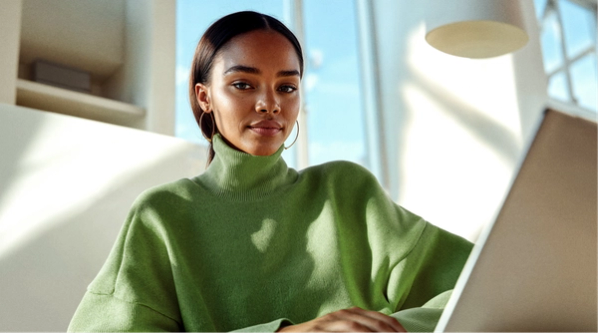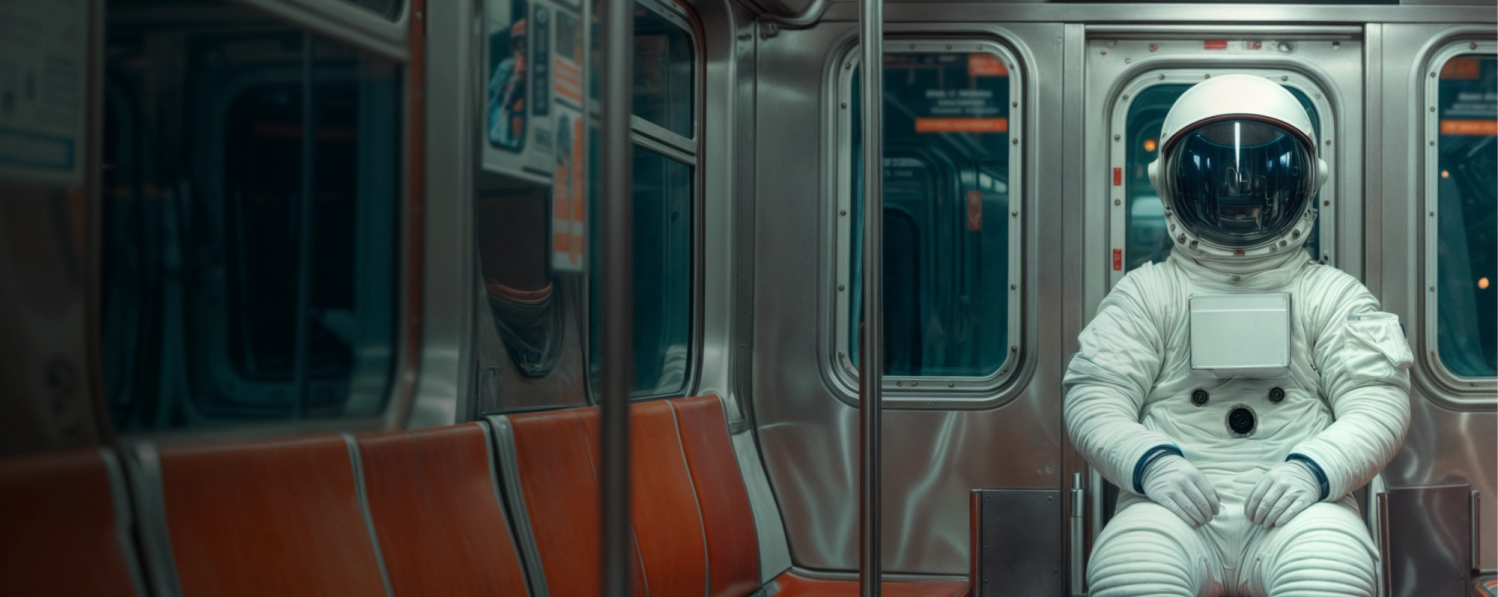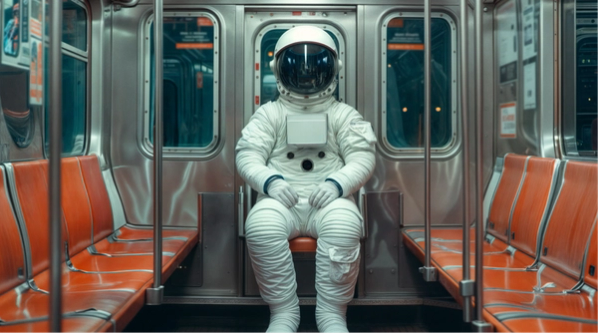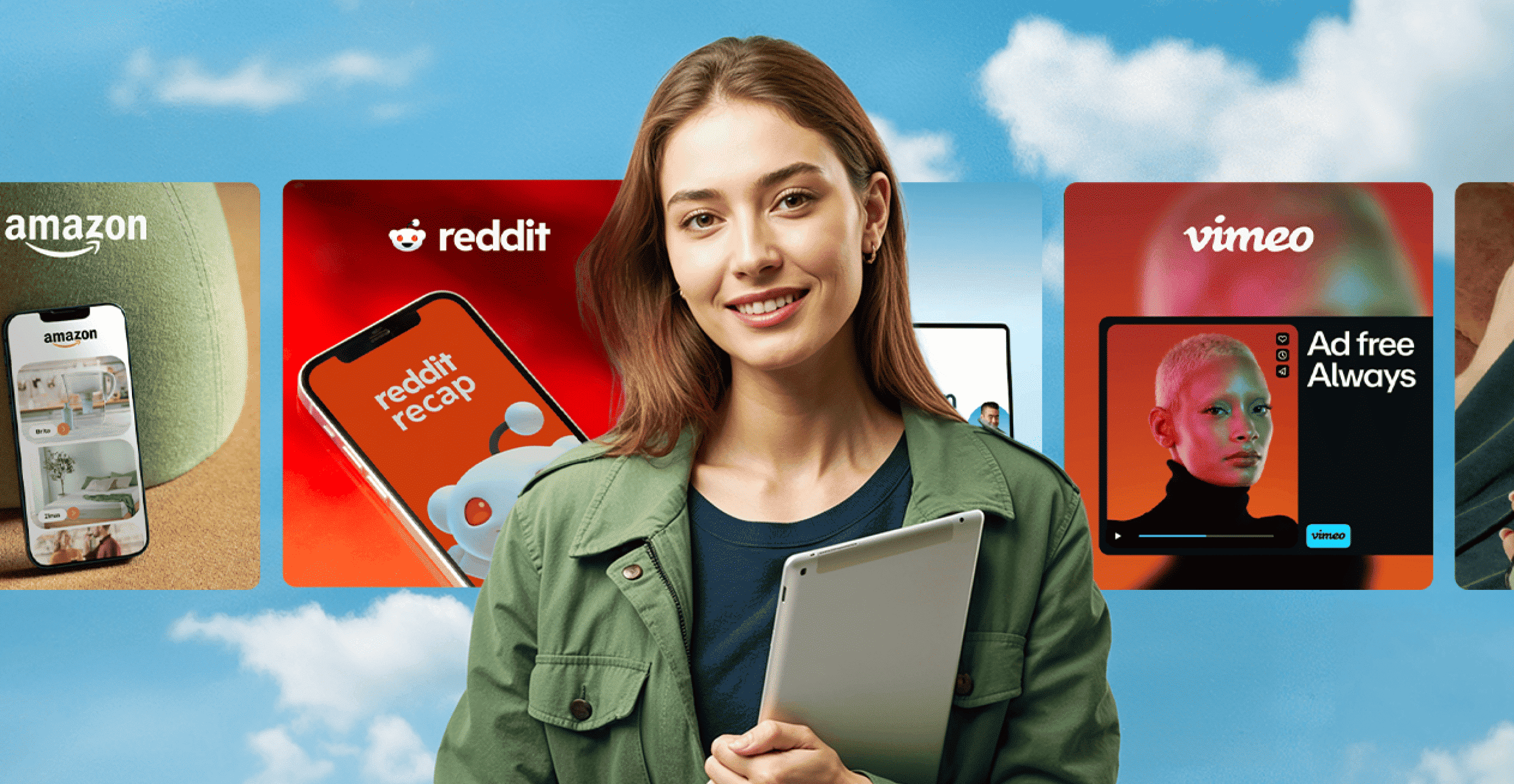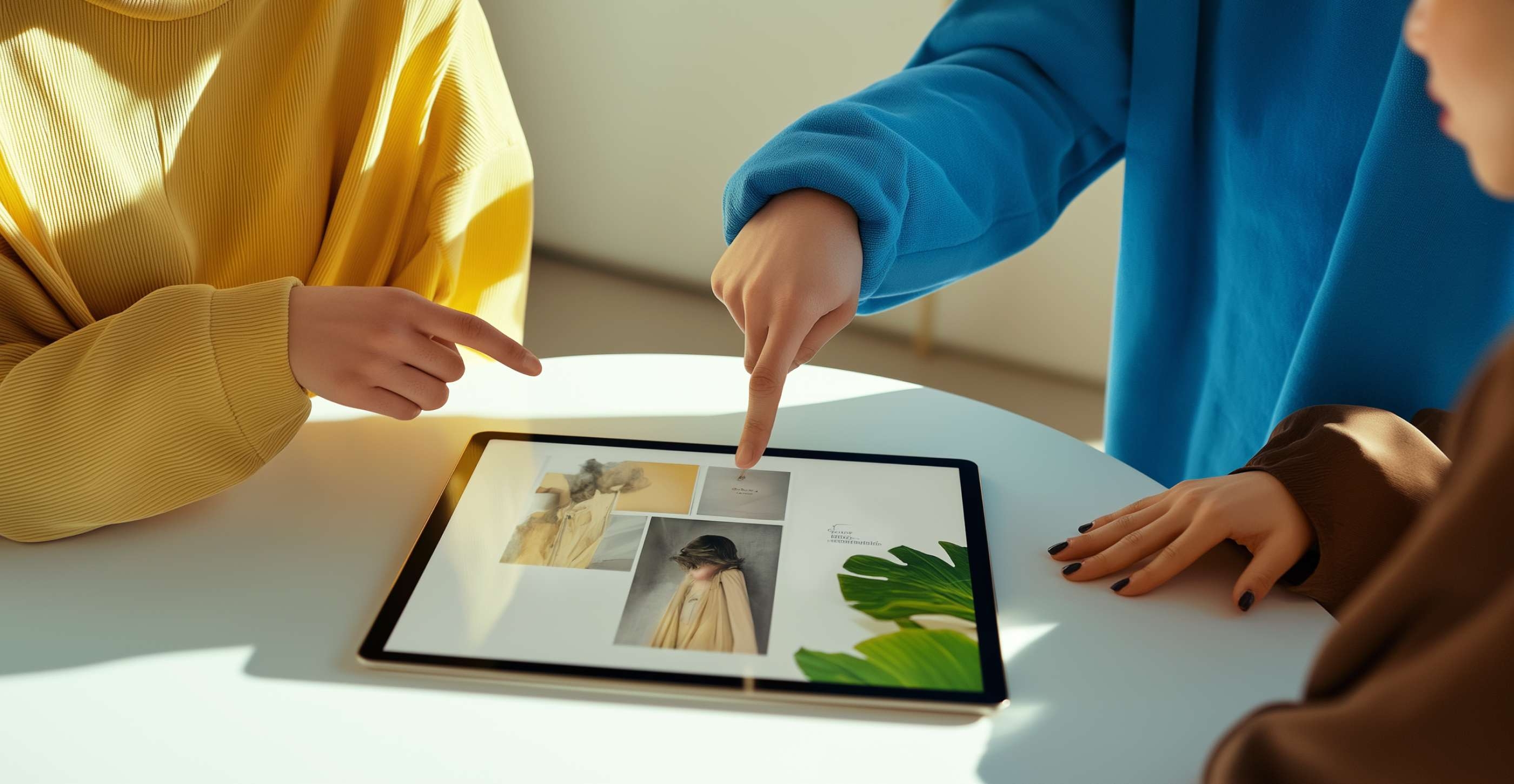
Mastering certain design principles is essential for producing compelling, effective creative. In this comprehensive guide, we unpack 13 key principles of design, how they work and why they matter for all design projects, big or small.
Design is everywhere. It influences everything from our pyjamas to our jeans, from our cities’ layouts to our homes.
But what makes a design “good?” Why do some designs attract us while others make us feel queasy? Is there a science behind the art, or is it just intuition?
If you’re facing a design quandary, this comprehensive guide for enterprise design teams will give you a deeper understanding of design principles. Ultimately, it can help you enhance and elevate your visual communication, branding and marketing strategies.
We cover the elements and principles of design, and include clear graphic design examples to illustrate these concepts.
Grab that coffee. It’s time for a design deep dive.
What are the principles of design?
The principles of design are the foundational guidelines—such as balance, contrast, movement, rhythm and unity—that help create visually effective and cohesive compositions.
The world’s best designers will tell you that, while following creative trends is important, it’s essential to follow certain established design principles to create effective visual designs. These tenets help ensure the end product is visually appealing and engaging.
The basic principles of design originated in the late 19th century. After all this time, they still form the foundation for balancing creativity and structure.
The 13 design principles of design every creative should know
Although certain fundamental aspects of visual design are more noticeable, every universal principle of design plays a vital role in the overall design process and output.
We’ve compiled a list of 13 fundamental design principles and examples to illustrate their function:
1. Emphasis
Emphasis, which highlights a focal point, is one of the most essential elements and principles of design. You can achieve emphasis through high contrast, color, size, asymmetrical balance, position or motion design.
Emphasis directs the viewer (cue Gestalt theory) to key design elements, ensuring the most essential visual elements get the attention they deserve.
A single element that’s larger or a different color can create bold emphasis and impact. Take a look at how the red “pops” in the images below.
(Source: Thimpress)
2. Balance
Symmetrical design creates stability by mirroring various elements on both sides of the center line. Asymmetrical balance, in turn, adds dynamic energy. Balance means that no single element of the design overwhelms the composition. Visual weight is distributed evenly, creating a sense of harmony.
Artists and designers create harmonious, pleasing compositions by thoughtfully applying symmetrical design and asymmetrical balance.
Superside’s sticker illustration for the Independent Pet Group (see below) showcases this fundamental principle of design. The designer used balance and a neutral background to establish a neat composition with centered elements and evenly spaced text (the cute cat is a bonus).
3. Contrast
Contrast is a key art and design principle that enhances visual interest by emphasizing differences between design elements. Using high-contrast color schemes or combining contrasting shapes, sizes and textures can effectively create dynamic, engaging compositions.
For example, placing bold, geometric typography over a soft, organic background creates textural and stylistic contrast. Using bold black accents against a light gray backdrop creates a strong visual impact through color contrast.
Designers and artists use light and shadow to create depth and drama, making compositions more engaging.
Take this iPod ad—the silhouetted figure against a bold background creates contrast, making the white iPod and earphones stand out.
(Source: Sitepoint)
4. Repetition
Many renowned works of art, such as Andy Warhol’s pop art paintings or M.C. Escher’s mind-bending artworks, use repetition. Designers also use repetition to draw attention to certain elements or to reinforce brand identity and coherence across campaigns.
Repeating elements such as colors, shapes and patterns can help establish rhythm and consistency in a design. Repeating certain elements (e.g., dotted lines) across various designs can reinforce brand identity.
The human brain is hardwired to recognize patterns. Tactful repetition can leverage this instinct and convey a sense of movement or energy.
By repeating a flowing pattern, for example, designers can create a sense of movement reminiscent of water or wind. This type of pattern can serve as an eye-catching, aesthetically pleasing focal point.
The Coca-Cola design below is an excellent example of repetition. By repeating the bottle shape in a curved layout, the image creates a visually striking, memorable image (a white-toothed smile) that instantly conveys happiness while reinforcing the brand identity.
(Source: Coca-Cola)
4. Repetition
In design, repetition is used to create a sense of rhythm and flow...just kidding. Moving on....
5. Proportion
Proportion refers to the relationship of size between different elements. Interestingly, though, it doesn’t only involve size, but also elements such as color, shape and texture.
A well-balanced design harmoniously aligns the proportions of certain elements, ensuring no area or element overpowers another. When certain elements are disproportionate, it can create discord and disharmony. Part of the graphic designer’s job is to carefully consider proportions when creating any composition.
Guided by the key principles of design, The North Face logo below is an example of a design with good proportions. The bold, clear font works harmoniously with the half-dome icon, enhancing the design without overshadowing it. It’s safe to say this designer did a decent job.
(Source: The North Face)
6. Movement
In the design realm, movement creates a sense of flow and visual interest. It directs the eye across an image or object, ensuring intuitive “navigation” of the design.
Famous works of art like Van Gogh’s “Starry Night” use dynamic brushstrokes to create movement. Similarly, designers use directional lines, color transitions and typography to guide users through a layout.
There are three main ways to create movement in design:
- Repetition: By repeating smaller elements like shapes, colors or patterns, designers can establish a visual rhythm that draws the viewer’s attention from one point to another..
- Contrast: This can create movement by positioning light elements against dark backgrounds or vice versa.
- Hierarchy: Arranging and organizing elements in a certain way can guide the eye from the most essential visual elements to the least important ones.
Note how the curved lines create an illusion of movement in the example below.
(Source: Pola Karola)
7. White space
White or negative space is the empty area surrounding the main subject in a design. It can create balance and contrast, and increase the design’s appeal.
Some designers overcrowd their designs, leading to visual clutter that overwhelms the viewer. By effectively using white space, they can create clean, captivating visuals. Negative space also highlights certain elements and can create movement. Used well, it can elevate a design from good to exceptional.
Winner landing pages often feature clean, simple layouts with ample white space, keeping visitors focused on the offer and call-to-action (CTA) buttons. Effective social media graphics also include white space to make them easy to understand as users scroll past.
White space is essential for sophisticated, standout design. The image below is a good example of negative space used well. Look at how the clean background emphasizes the “Pocket Penguins” branding and book covers.
(Source: Creatopy)
8. Rhythm
The principle of rhythm focuses on creating a visual tempo or sense of movement in design by strategically repeating elements such as lines, shapes, colors or textures.
Used effectively, rhythm also guides the viewer’s eye, creating flow and setting the pace at which the design is consumed. It also emphasizes certain elements, directing attention to focal points.
Rhythm can convey feelings or moods. For example, a design with a fast-paced rhythm may evoke energy and excitement; a design with a slow, steady tempo can create a sense of calm and relaxation.
The image below conveys rhythm using repeated semi-circles. Alternating colors and varied line widths add movement and balance.
(Source: Maverick)
9. Pattern
Pattern is a key design element in both natural and man-made objects. It’s closely related to rhythm and repetition in design.
Patterns found in nature—like leaf shapes, zebra stripes and ripples in sand dunes—often show up as variations in surface texture or appearance. These motifs differ from manufactured patterns like chessboards and candy cane stripes, which tend to be more precise and geometric.
In design, patterns enhance visual appeal, add texture and depth, and highlight specific areas. They can also convey information (think barcodes or QR codes).
In a design project for Brio, Superside’s creatives used the design principle of pattern to develop connections, icons and symbols, ultimately establishing a cohesive visual language. This consistent approach was applied to Brio’s packaging, business cards and website. The result: A coherent, professional and recognizable brand.
10. Hierarchy
There are several ways to organize information visually. One common approach is hierarchy.
Typically, the goal is to arrange elements in a way that emphasizes the most important or noteworthy ones. This can be accomplished in various ways, like using different fonts, sizes or colors.
Hierarchy can make it easier to make sense of a design. Conversely, overemphasizing one element can confuse the viewer. Maintaining balance is critical, ensuring all design elements tell their part of the story.
Take Superside’s website banner, for example. The title text is central, which immediately draws your eye, followed by the CTA button. After this, you’re likely to notice the visuals on the right. A clever hierarchy has been created.
11. Variety
Too much of anything, even something positive, can create a negative experience. This is particularly true in design. And, as with all things in life, moderation is key.
To elevate a design from basic to brilliant, it’s important to balance the familiar with the new. Adding variety can make a design more dynamic, but too many competing elements can feel chaotic. The key is to balance variety with unity, so the design feels engaging and cohesive.
In eye-catching designs, each element is visually appealing and serves a specific purpose, contributing to the overall aesthetic.
A practical example is Duolingo’s app and branding. The app features a variety of bold colors, playful animations and clear progress indicators, making the interface engaging and intuitive.
(Source: Duolingo)
12. Unity
This design principle involves ensuring that different elements work together harmoniously. You can craft visually appealing, easy-to-understand designs by understanding the principle of unity.
Unity can be achieved by using similar colors, shapes or textures, alongside recurring elements. A central motif can also be unifying. When successful, the design will be balanced and organized, without any random or misplaced elements. As excessive unity can lead to a dull or flat appearance, striking a balance is essential.
The Handprinter website below demonstrates unity through its cohesive color palette, recurring organic shapes, hand-drawn illustrations and harmonious typography. The result is a visually seamless, well-organized design.
(Source: Handprinter)
13. Harmony
Harmony involves using similar visual elements to create a cohesive and visually pleasing whole. This design principle can be achieved through repetition, rhythm and pattern.
Repeating elements such as fonts and colours create a sense of unity, while rhythm and pattern add visual interest and variety. Just as positive and negative space must work together, harmony balances complexity and simplicity.
Spotify Wrapped (see below) achieves harmony through consistent use of colors, typography and rhythmic patterns, applying several key design principles to create a cohesive yet dynamic design.
(Source: Spotify)
Why are the universal principles of design important?
Think of the 13 principles of design as instruments in an orchestra—each one plays a unique role, and when used in harmony, they create a powerful, beautifully composed visual performance.
Design that looks good and works well combines some or all design principles.
Here’s a breakdown of why you should include them.
Reason #1: Graphic design plays a role in business success
Good graphic design influences marketing outcomes in two main ways:
1. Design principles matter
Design isn’t just about how something looks—it’s about how it works. Good visual design prioritizes clarity, functionality and impact. When done well, the design connects with the audience, holds their attention and encourages meaningful interaction, often leading to better engagement and higher conversions.
Consistent branding (based on the principles of design) can also build trust and encourage audience interaction with your brand. In fact, research shows consistent brand presentation can increase revenue by up to 23%. About 50% of consumers are also more likely to purchase from recognized brands.
2. Poor visual design can cost you
Ignoring the basic design principles is likely to lead to poor outcomes. Think low engagement, low brand recall and lost opportunities.
Poor user experiences cause businesses to lose approximately 35% of sales every year, translating to around $1.4 trillion in global revenue. Plus, 88% of users are unlikely to return to a website after having a bad experience.
Unfortunately, rushed, large-scale creative production often leads to poor visual design and inconsistencies. A partner like Superside can, however, step in to assist you in maintaining brand consistency and top-quality design as you scale up your campaigns.
Reason #2: Design elements and principles drive enterprise-level success
Considered design is crucial to the success of large enterprises. Here’s why:
1. Brand consistency and recognition increase appeal
Your enterprise must have a consistent visual identity to stand out in a cluttered marketplace. The brand identity should be reflected in every ad, social media post, webpage and video.
Using simple design principles like balance, repetition, white space and hierarchy can help you establish this consistency—and build trust and recognition with target customers over time.
In fact, consistent branding can increase your enterprise’s revenue by 10% or more.
2. Expanded marketing opportunities
The latest digital marketing trends offer challenges and opportunities for savvy brands wanting to expand their reach and grow into new markets.
One key area influenced by these trends is web design, where persuasive designs and visuals are vital in driving engagement.
For example, well-thought-out, persuasive web design can guide users’ attention to key messages, such as CTAs, pricing and contact information. A good UX designer can also enhance content navigation and increase conversion rates by cleverly using contrast, emphasis and white space.
3. Streamlined scalability and efficiency
Continuously applying the 13 basic design principles can speed up the creation of high-quality creative. Instead of starting from scratch or guessing what “looks good,” designers will have a reliable framework to follow.
A structured workflow will also reduce bottlenecks and streamline operations while helping teams to preserve design quality and brand consistency.
How Superside helps enterprises apply design principles at scale
The ability to scale will help your brand to respond in real-time to market shifts, seasonal campaigns and viral moments.
Superside helps our customers scale their creative in three ways—all while paying close attention to the design principles outlined in this article:
1. We’ll become your creative team’s creative team
We know that today’s in-house design teams are stretched. In fact, nearly every team (92%) faces growing workloads, with 62% handling twice as many requests as they did just a year ago.
One solution is to empower your creative team with robust external creative support in the form of Superside.
As an experienced enterprise outsourcing service, we’ll integrate seamlessly with your team, helping you to manage large-scale design projects. Sticking to sound design principles and maintaining brand consistency will become easy with us by your side.
2. We specialize in applying design principles effectively
If we work together, our designers will ensure every project follows fundamental design principles to deliver:
- Visually compelling creative that works.
- Creative branding strategies that help you beat your competitors in every channel.
- Optimized layouts and UI designs for an improved user experience.
- And much more.
3. We’re a reliable, scalable design partner
Today’s enterprises need reliable partners to help them scale their marketing campaigns effectively. Superside is such a partner, trusted by fast-moving teams worldwide.
With simple, predictable pricing and no hidden fees, our subscription model allows you to scale your creative up or down as needed, without the pain of constant contract or per-project negotiations.
As a matter of principle, our top creative talent will provide tailored, high-quality creative that aligns with your brand guidelines and the basic principles of design.
Strong design principles matter in enterprise growth
The design elements and principles outlined in this article work together to create impactful, high-converting designs. If design principles such as unity, white space, variety, harmony and hierarchy suffer as you rush to create bigger campaigns faster, you’re in dangerous territory.
Used strategically, however, the principles of design provide balance and clarity, making every design a compelling lead generation or brand awareness tool.
With Superside’s experienced creatives by your side, you can expect high-quality, impactful designs on time—every time.















